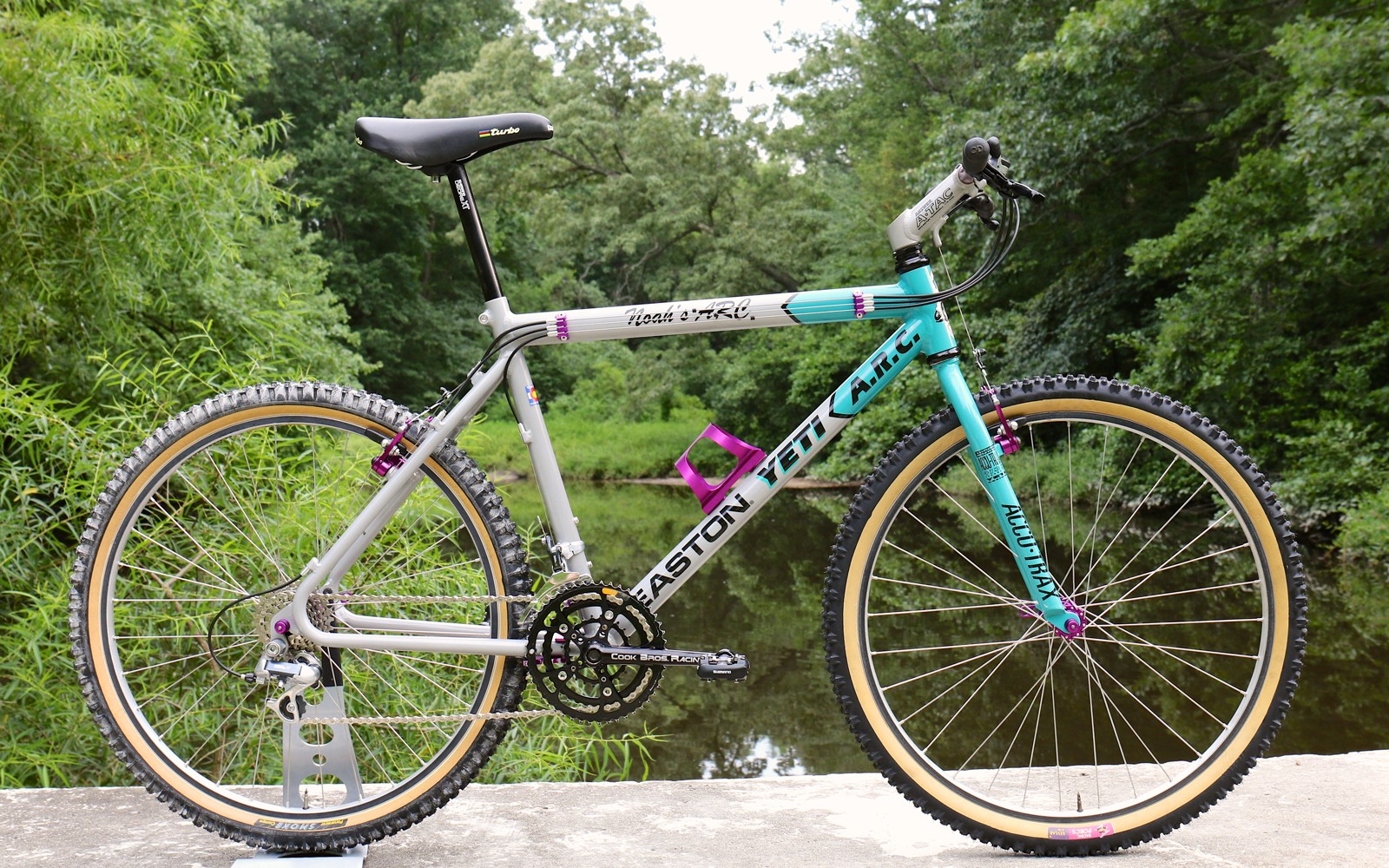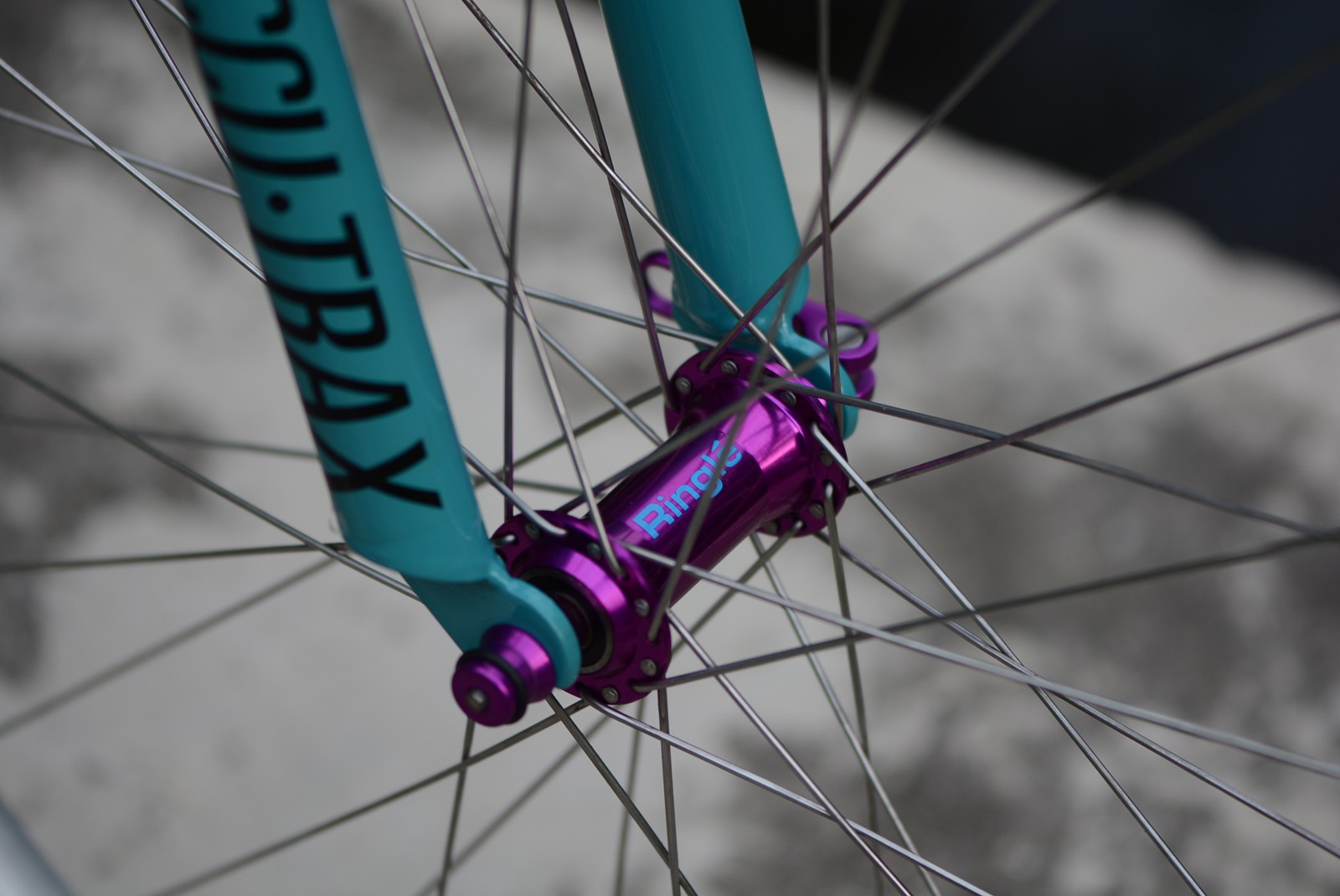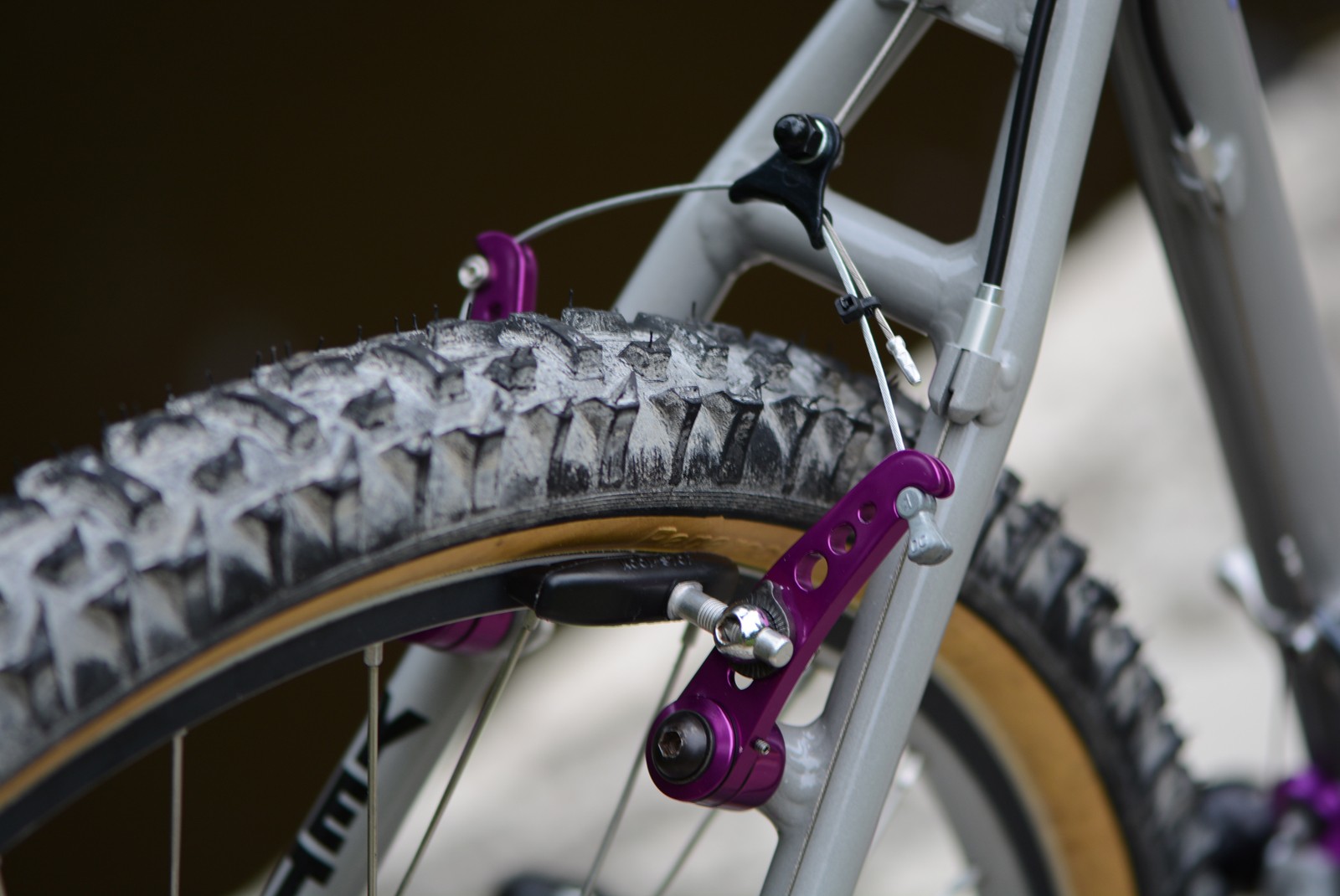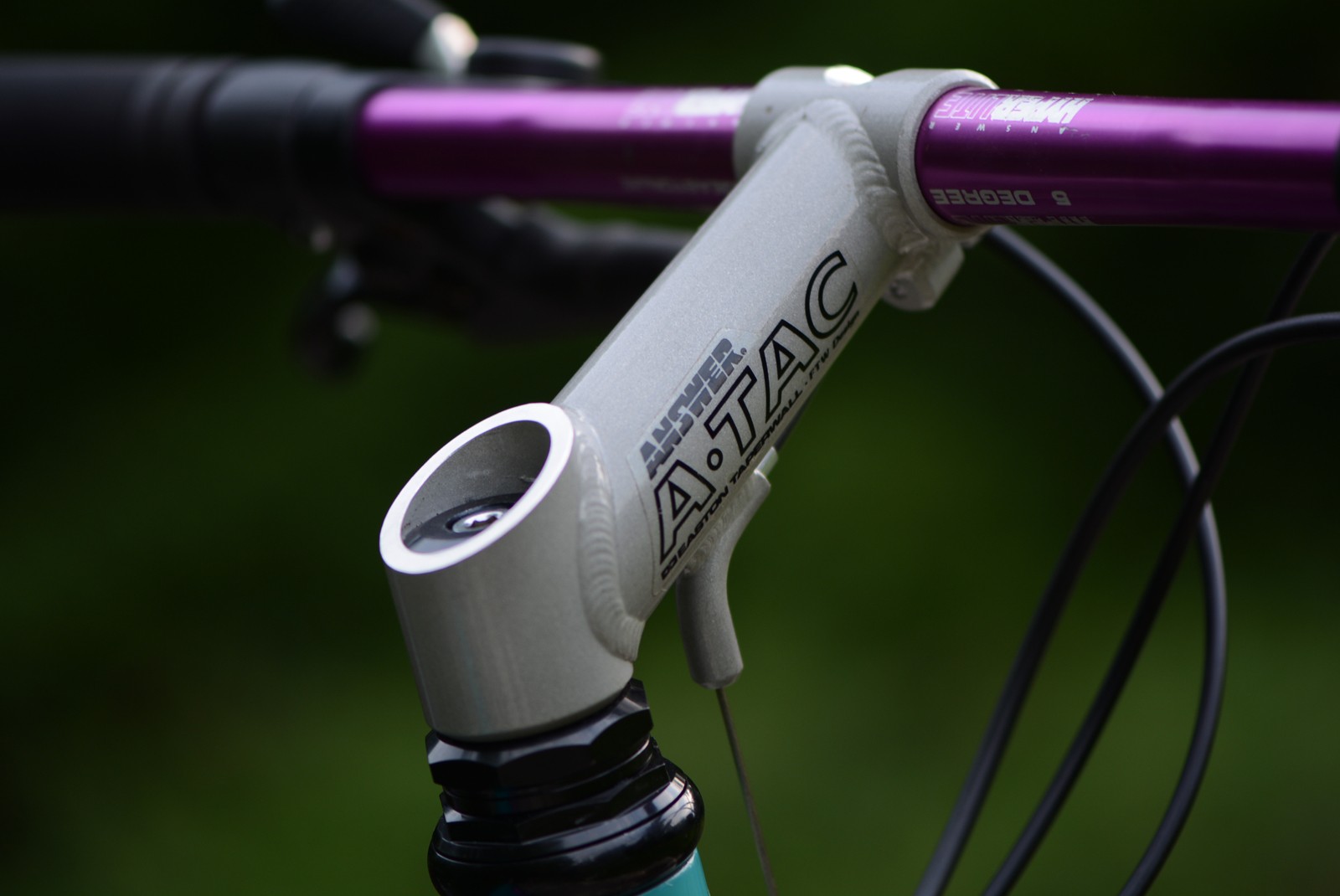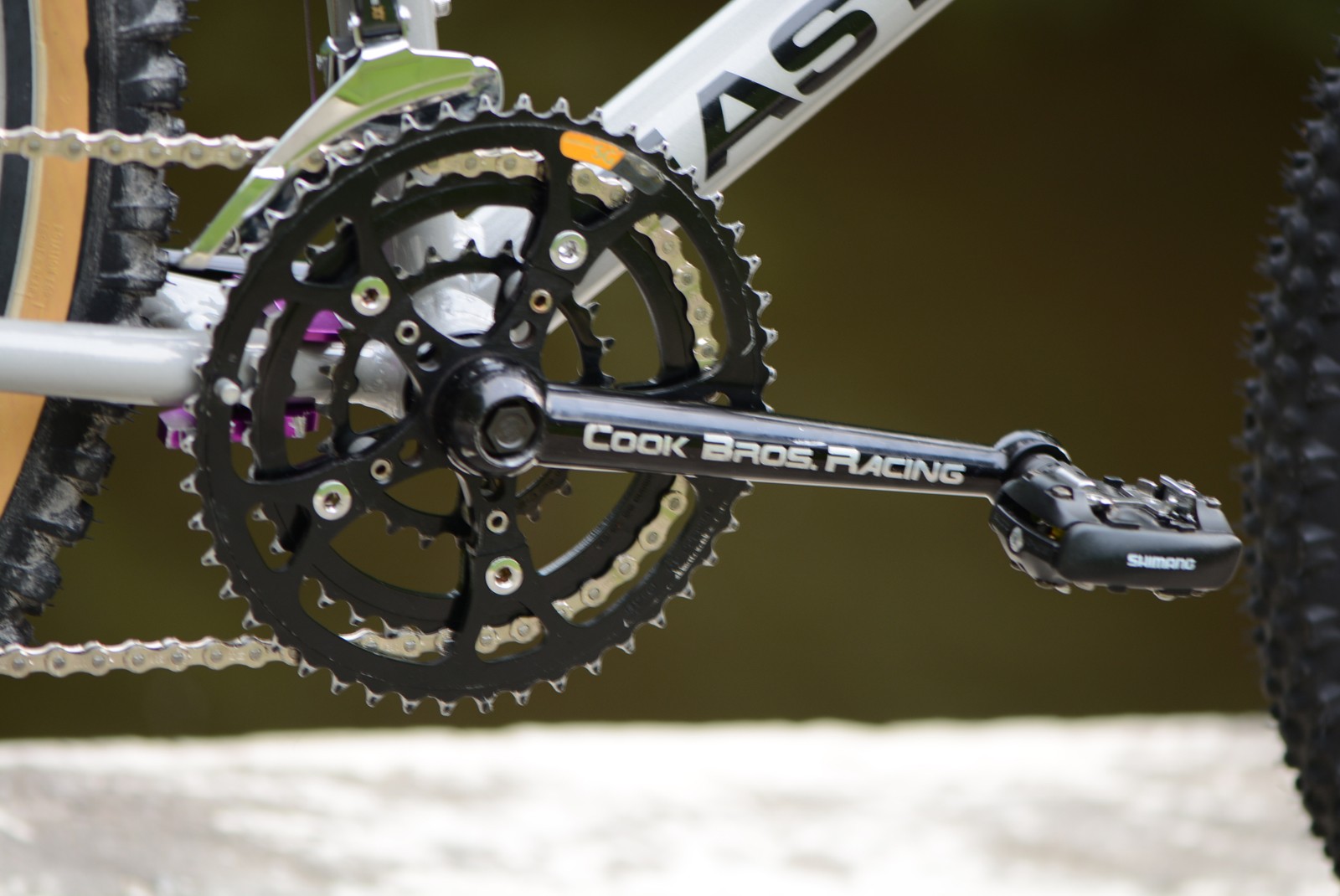UNAPOLOGETICALLY RACE BRED
One of the defining traits of Yeti cycles is that the company focused on making race bikes and virtually nothing else. There were no entry level bikes, no compromises, only purebred race machines. In my opinion no other bike in their lineup represents that single minded approach than the Yeti A.R.C.. The A.R.C.’s lightweight construction and aggressive geometry helped establish it as a dominating combination on the World Cup circuit, which in turn solidified Yeti’s presence on the world stage. The me the A.R.C. is all everything that I wanted an aspiring mountain bike racer, it’s an all out race machine with no thrills and is meant to do one thing and one thing only, go very very fast.
This particular A.R.C. is the 27th one built and one of the earliest production frames recorded. Although few people spec’d A.R.C. with a rigid fork in favor of a Manitou suspension fork the first catalog showed the bike with an Accutrax and so I decided to build this one in that likeness. The early iterations of the A.R.C. didn’t change much until 1996/97 when Yeti abandoned the 1 1/4″ headset in favor of the standard 1 1/8″ and removed the rear brake cable stop committing the design to use V brakes. Creating the signature loop stays was one of the more difficult features for Yeti to work out, so to keep things simple the early production bikes (1992-1994) had straight stays. Sometime in 1994/1995 the design evolved to incorporate curved stays to provide additional tire clearance.
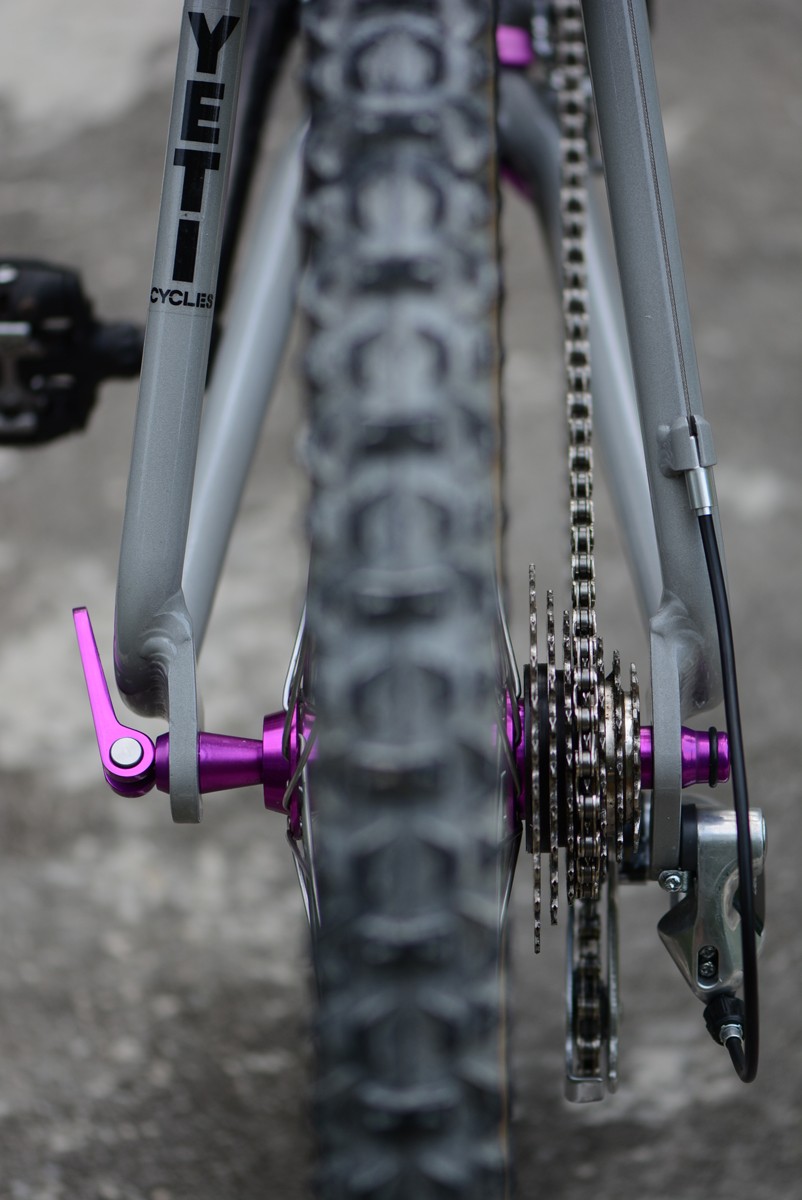
By the mid 90s Yeti had secured sponsorship from Grafton, Ringle and HED and so the race bikes often featured all of the latest and greatest from those companies making them some of the most visually stunning bikes around. Consequently a lot of the restorations you are likely to see today mimic those mid 90s builds. For me the early version of the A.R.C. with the classic turquoise dart over a gray (clear actually) rear end with a little touch of 3DV is the ultimate iteration of the bike.
Today the Yeti A.R.C. and its derivatives is one of the more recognizable vintage bikes. They also have a widespread reputations for cracking. The lightweight Easton tubing they were made from hasn’t aged well, and combined with some headtube machining tolerances as well as people storing their bikes with seatpost binder bolts preloaded has resulted in a large percentage of these frame cracked. I can not argue that the A.R.C. (and its Manitou cousins) have a higher than average failure rate I would like to point out that these were built to be an all out race bike meant to last a season or two and then be discarded. So, expecting them to survive for 30 times their expected life span is a bit unrealistic.
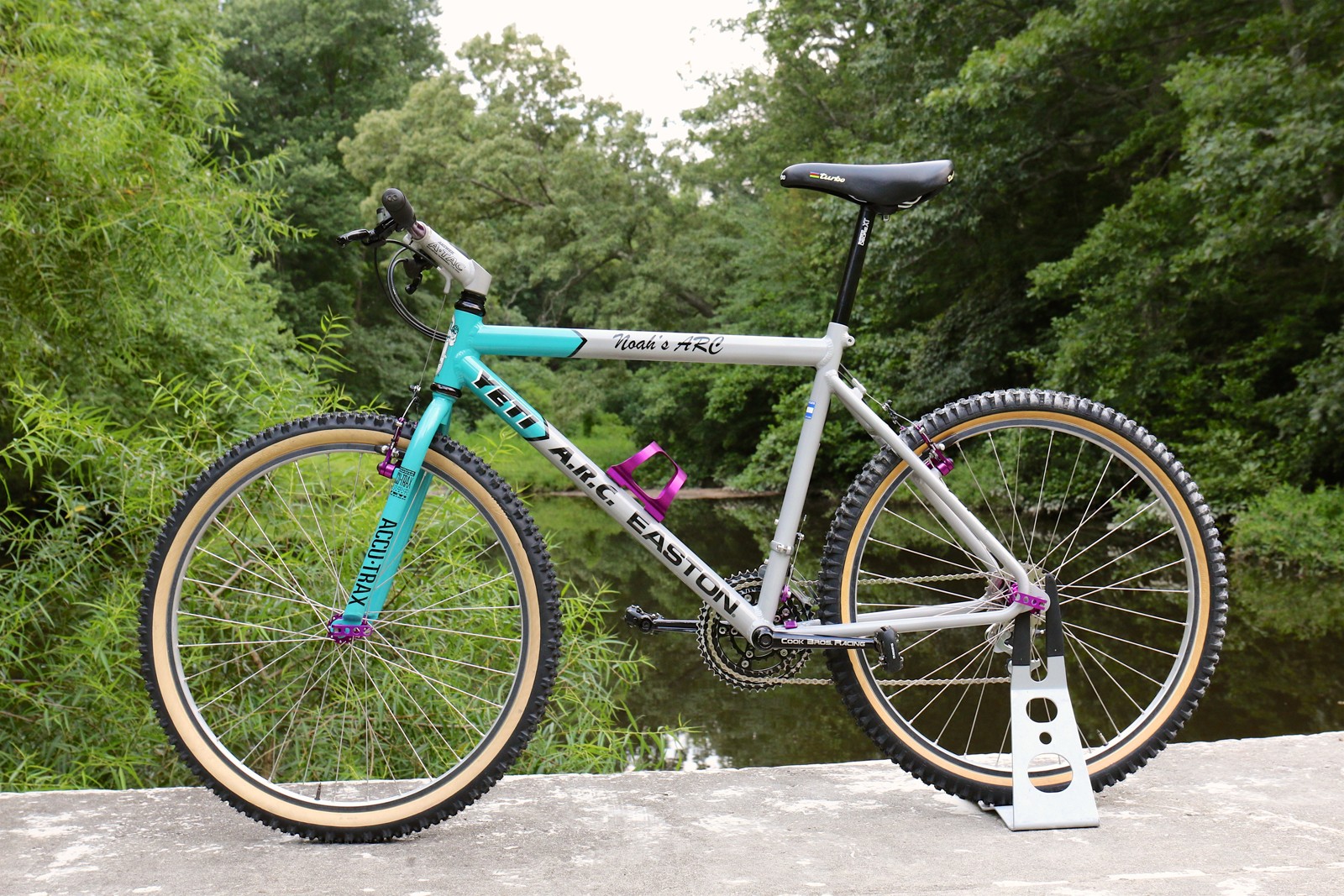
The A.R.C. is hardly a rare bike by most measures, with close to 3500-4000 made during the 92-96 production you have a pretty good chance of finding one. If you do I strongly suggest you try it. Personally I like a functional build on these in lieu of a show build as these are really fun to ride bikes and are often let down by the fancy aftermarket components that look good, but seldom perform over time.
Completed Projects:
Current Projects:
Newsletter sign up:
Subscribe to our newsletter to receive info on our latest projects and new podcast releases

